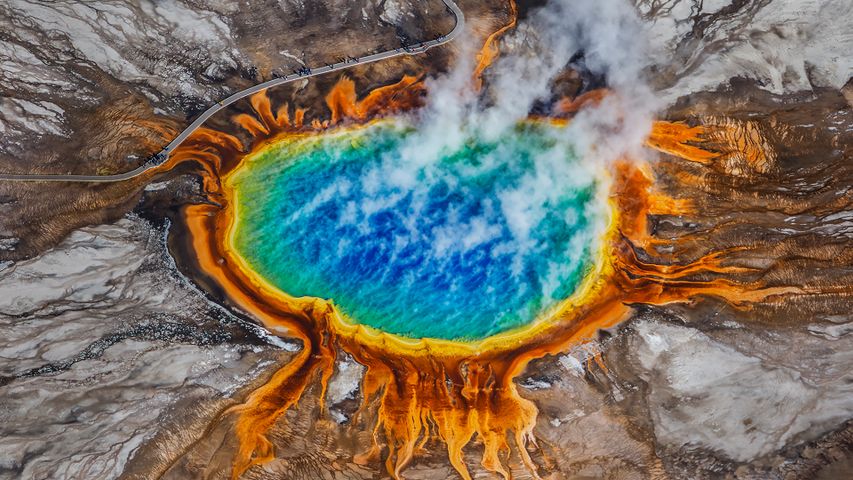Quaking aspens of Pando in Fishlake National Forest, Utah
© Don Paulson/Danita Delimon
Fall comes to Pando. Fall comes to Pando
All is not as it appears to be here at Pando, in Utah's Fishlake National Forest. At first glance, visitors likely see a massive grove of quaking aspen trees, their leaves dancing in the wind. But Pando is not many trees; instead, it's a single organism. Like many aspen groves, the 40,000 trees in Pando are genetically identical cloned stems that sprouted from the same root system. First discovered in 1968, Pando made waves in the scientific world. It's become recognized as one of the heaviest known organisms—weighing 6,000 metric tons—and one of the oldest known living organisms. Scientists estimate its root system is upwards of 80,000 years old, having endured the last ice age and countless forest fires. It got to be so old partly because most of the organism is protected underground. So, while an individual stem can die, the organism as a whole survives.It's only recently that human activity has threatened Pando’s health, with drought, grazing, and fire suppression interfering with its growth. ‘Pando’ translates as 'I spread out' in Latin, a reference to the way it extends itself through cloning. But its delicate, fluttering leaves—which turn golden this time of year—have lent it another moniker: the Trembling Giant.
Related Images
Bing Today Images


 Bottle-cap mural made by Oscar Olivares in Guatire, Venezuela
Bottle-cap mural made by Oscar Olivares in Guatire, Venezuela
 Mona Vale Rockpool, Sydney, Australia
Mona Vale Rockpool, Sydney, Australia
 'The Spirit of Electricity' by Raoul Dufy, Museum of Modern Art, Paris, France
'The Spirit of Electricity' by Raoul Dufy, Museum of Modern Art, Paris, France
 A delta in the Venetian Lagoon, Italy
A delta in the Venetian Lagoon, Italy
 Paper flags strung over a street in San Miguel de Allende, Mexico
Paper flags strung over a street in San Miguel de Allende, Mexico
 Grand Prismatic Spring, Yellowstone National Park, Wyoming
Grand Prismatic Spring, Yellowstone National Park, Wyoming
 Desert bighorn sheep in Valley of Fire State Park, Nevada
Desert bighorn sheep in Valley of Fire State Park, Nevada
 Eucalyptus trees, Megalong Valley, Blue Mountains National Park, NSW, Australia
Eucalyptus trees, Megalong Valley, Blue Mountains National Park, NSW, Australia



